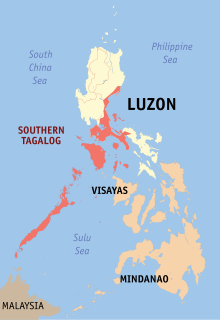It is proposed that this article be deleted because of the following concern:
If you can address this concern by improving, copyediting, sourcing, renaming, or merging the page, please edit this page and do so. You may remove this message if you improve the article or otherwise object to deletion for any reason. Although not required, you are encouraged to explain why you object to the deletion, either in your edit summary or on the talk page. If this template is removed, do not replace it . The article may be deleted if this message remains in place for seven days, i.e., after 19:34, 16 June 2019 (UTC). Nominator: Please consider notifying the author/project: {{subst:proposed deletion notify |Ama-ron|concern=The sources referenced below do not even mention "Ama-ron". There are no other reliable secondary sources that can be used to verify if this "Ama-ron", legendary or otherwise, even exists at all. This means the Wiki entry fails to satisfy the [[Wikipedia:Verifiability|verifiability]] and [[Wikipedia:Notability|notability]] guidelines. Also, it appears that the author of this article [[User:MaryNato|MaryNato]] has a negative reputation regarding his/her contributions to Wikipedia, judging from the content of his/her [[User_talk:MaryNato|talk page]]. For example, a fellow Wiki editor named [[User_talk:Esanchez7587|Esanchez7587]] called the user out for the "unconstructive edits". It is therefore reasonable to conclude that this Wiki entry is just one of [[User:MaryNato|MaryNato's]] several unconstructive edits.}} ~~~~ |
The truthfulness of this article has been questioned. It is believed that some or all of its content may constitute a hoax.(June 2019) |
| Amaron | |
|---|---|
| Member of Philippine folk hero | |
| Gender | Male |
| Region | Philippines |
Ama-Ron or Amaron is a character in Philippine mythology of whom little is known. His story is more common in the southern parts of Luzon, figuring mostly in folk songs.[ citation needed ] Like most male Filipino mythological heroes, he is described as an attractive, well-built man who exemplifies great strength.[ citation needed ] Ama-ron is unique, however, due to his apparent lack of an origin myth.[ citation needed ]

Anitism, simply referred as Philippine mythology or indigenous Philippine ancestral religions, is a body of myths, tales, and superstitions held by Filipinos, mostly originating from beliefs held during the pre-Hispanic era. Some of these beliefs stem from pre-Christian religions that were especially influenced by Hinduism and were regarded by the Spanish as "myths" and "superstitions" in an effort to de-legitimize legitimate precolonial beliefs by forcefully replacing those native beliefs with colonial Christian myths and superstitions. Today, some of these precolonial beliefs are still held by many Filipinos, both in urban and rural areas.

Luzon is the largest and most populous island in the Philippines. It is ranked 15th largest in the world by land area. Located in the northern region of the archipelago, it is the economic and political center of the nation, being home to the country's capital city, Manila, as well as Quezon City, the country's most populous city. With a population of 53 million as of 2015, it is the fourth most populous island in the world, containing 52.5% of the country's total population.













